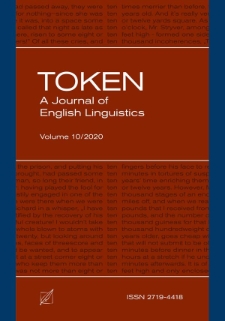Digital Library of the Jan Kochanowski University contains 13 113 digital objects
Object
Title: Fiction as a source of linguistic data: Evidence from television drama
Creator:
Group publication title:
Abstract:
Growing evidence suggests that the language used in fictional television can be a fair representation of contemporary language use and changes within the linguistic system. To explore this relationship further, the present study uses variationist quantitative methods to examine the composite system of intensifiers, as well as adjectives of strangeness, in the British fictional TV series Misfits. Results indicate that the distribution and constraints of the two variable systems are similar in both scripted and non-scripted language. With respect to intensifiers, amplifiers were more frequent than downtoners, younger speakers used intensifiers more frequently than older speakers, and women had higher intensification rates than men. Predicative adjectives were also intensified more frequently than attributive adjectives, and the top three boosters were so, really, and very. As for adjectives of strangeness, consistent with findings from vernacular speech, the adjective weird made up over 70 percent of the semantic field, and was favored predominantly by younger speakers. The present study therefore provides empirical support for the use of naturalistic fictional language as a proxy for studying language variation and change.
Place of publishing:
Physical description:
ISSN:
Publisher:
Wydawnictwo Uniwersytetu Jana Kochanowskiego w Kielcach
Date issued:
Identifier:
oai:bibliotekacyfrowa.ujk.edu.pl:4254 doi:10.25951/4357
Language:
Is part of:
Token : A Journal of English Linguistics
Has part:
Type:
Access rights:
Format:
Object collections:
- JKU Digital Library > University Publishing
- JKU Digital Library > University Publishing > Serial publications
- JKU Digital Library > University Publishing > Serial publications > "Token : A Journal of English Linguistics"
Last modified:
Apr 4, 2025
In our library since:
Nov 25, 2021
Number of object content hits:
279
Number of object content views in PDF format
348
All available object's versions:
https://bibliotekacyfrowa.ujk.edu.pl/publication/4357
Show description in RDF format:
Show description in OAI-PMH format:
| Edition name | Date |
|---|---|
| Stratton, James M., Fiction as a source of linguistic data: Evidence from television drama | Apr 4, 2025 |

